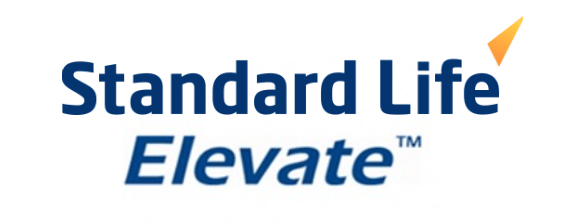Platforms took the retail investment space by storm over a decade ago. Many providers went into platform market thinking it was going to be a field of dreams, as in “if you build it, they will come.” That dream turned in a nightmare for Axa.
£10 billion AUA and £172million spend later, Axa finally decided to cut its losses and get out of the platform market for good. Axa has flogged the Elevate platform to Standard Life for an undisclosed amount. 
3 years ago…, way, way before the media first reported Elevate was up for sale, we told folks all was not well with Elevate when we first published our first Platform Profitability Guide. This is what we said…
The reality is that loss-making platforms, including those owned by parents with deep pockets, are more likely to be acquired, shutdown or exit the market. If a provider exits or is acquired, it is the advisers (and potentially clients) who will be left to pick up the pieces.
Elevate has failed miserably to make a profit and losses continue to mount. Going by its P&L Account Reserve, the business has spent well over £100M since getting the business off the ground, which is more than ten times the amount spent by its peers Nucleus and Ascentric, but there’s no evidence whatsoever that Elevate is any better in terms of service or technology. This begs the question: what are they spending this money on? Piling up loses with no end in sight in the name of ‘investing’ in the business is no way to run a platform.
– Platform Profitability Guide, 2014
While the marketing machine at Axa was churning out propaganda about the state of their business, it was clear that the business was heading in the wrong direction. I guess the bean counters in Paris finally had their way and decided to cut the umbilical cord. Goodluck to the the people at Elevate. I bet it was fun while it lasted.
So what now?
Both Standard Life Wrap and Elevate are powered by the same technology provided by FNZ, but obviously functionality, user interface and pricing are very different. The biggest challenge would be what Standard does with the business. Standard Life, in their classic approach is controlling the narrative in the media by being tight lipped about what advisers can expect. I see two possibilities
- Keep Standard Life Elevate ticking along
Standard could keep both platform front-ends as they are (while merging shared services like payroll, marketing, customer services etc) but obviously this isn’t particularly effective from an operational point of view. The risk with this option is that Elevate will likely become a zombie platform ( a term that Standard has used in their propaganda a few times) …. i.e it will fall behind in terms of technology and service in the long run. Platforms need ongoing investments in technology and operation, and it’s hard to see how Standard Life will make Elevate a priority in terms of on-going development, while at the same time running its own SL Wrap.
I’m sure there will be folks out there saying this isn’t a big deal and everything is going to be OK. But the bulk stops with the adviser. It’s the adviser who has to cope with poor service and inefficiency that many platforms create. We work with many adviser firms, and see firms often chasing their tails when platforms don’t work as they should.
There are also potential issues with pricing and propositions; Elevate has myriads of pricing deals agreed with large firms and networks and some of those may be under review. I can’t see the discounts for using Architas funds on Elevate (through exclusive super clean share classes) continuing for long and what happens to Axa Isle of Man offshore bond business held via the platform, since offshore bond business has been sold to Life Company Consolidation Group?
- Full Integration
Standard could decide to merge to back and frontend to achieve cost-savings and operational, perhaps the more reasonable option in the medium to long term but this is one hell of a job. Migrating assets would be a very hard and painful process for advisers and a big risk for Standard because, like vultures circling their prey, other platforms will begin to target advisers on Elevate to move assets rather than wait around to go through a potentially painful migration process. It appears Elevate is already experiencing some outflows, having reached £10 billion of AUA in April of 2015, yet the deal announced suggest Elevate has AUA of £9.8billion as at May, 2016. That doesn’t seem to add up for a platform with over £1 billion a year net inflow but may be I’m missing something.
Full integration of the two platform will have real impact on adviser businesses, as it amounts to effectively moving assets from Elevate’s database to SL Wrap’s. While both are on FNZ tech, FNZ hasn’t really been through a ‘re-platforming’ exercise in the UK (its two main competitors Bravura (with Nucleus) and GBST (with AJ Bell) have), so it could be a bit messy.
Either way, it looks like the light at the end of the tunnel for Elevate users is an oncoming train. Whatever Standard Life decides, I guess the question for advisers on Elevate platform is do you want to hang around and find out? I suspect that most firms will probably stop placing new business on Elevate for the time being (assuming they haven’t already) but moving existing assets off the platform is trickier and potentially very costly for firms and clients.
[bctt tweet=”Like vultures circling their prey, other platforms will begin to target advisers on Elevate to move assets rather than wait around to go through a potentially painful migration” username=”AbrahamOnMoney”]
Final Words
Given the number of players in the market, there’s just no reason for advisers to settle for mediocre platform.
We’ve said this before, when it come to selecting platforms, financial stability trumps virtually everything else. And that isn’t the same as the strength of the parent company. For us it means that the platform proposition stacks up on its own. The financial performance of platforms is crucial and should play a key role in adviser due-diligence and selection because deep pockets of a parent company just aren’t enough. The fact is, big providers with deep pockets won’t continue to fund loss-making platform subsidiaries forever. Eventually, shareholders ask questions; big businesses get reviewed; bean counters are called in; ‘restructuring’ happens and loss-making platforms are at risk of being axed by their parent company. And only when the tide goes out do you discover who’s been swimming naked.
There are around 30 adviser platform, and that’s probably 15 to many. Anyway, one down, a few more to go. The question is, who’s next?
.
.


